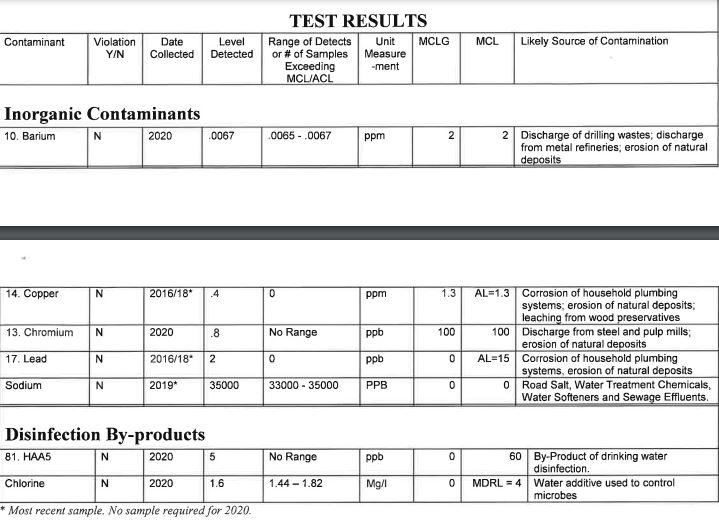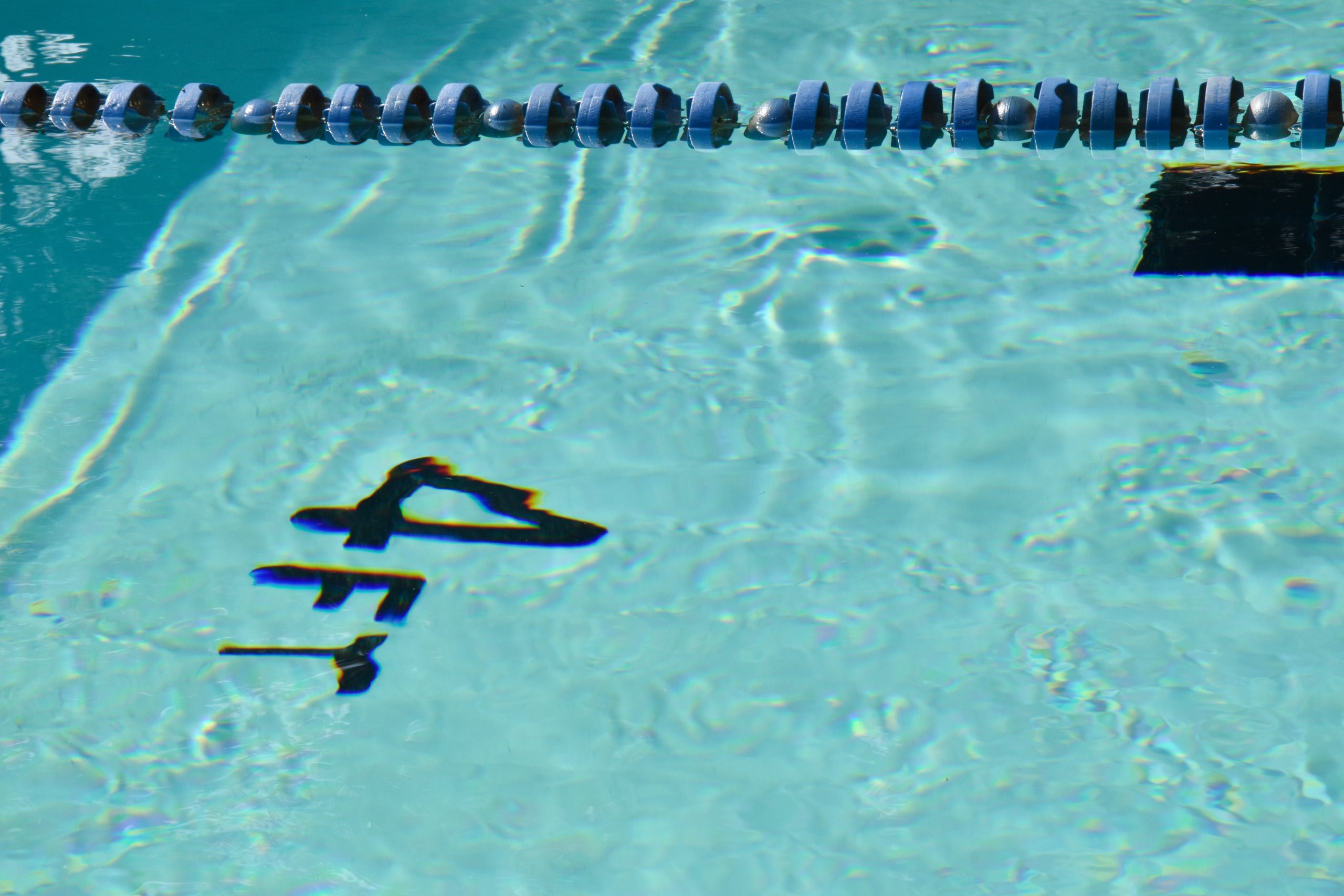Protection from Over-Chlorination
Protection from Over-Chlorination
When I think about the pool where I learned to swim, I can almost smell the chlorine! It was a YMCA where one half of the building had a “giant” (to a 5-year old) pool with lanes divided by strings of red plastic floating buoys, and the other half filled with exercise equipment and sweating people. Through my school years, some of my friends came there regularly to practice on the swim team and I thought, how can they endure the smell and the sting of chlorine in their eyes, and the effects of chlorine on their hair? Swimming was fun but I preferred open water for those reasons.
If the smell of your home tap water reminds you of a chlorinated pool or bottle of bleach, it may be a high standard use of chlorine, or the effect of free chlorination. The City of Fort Lauderdale Public Works Department defines free chlorination as “a temporary process that distributes free chlorine in place of combined chlorine (chloramine) throughout the water distribution system as part of routine distribution system maintenance.” It is a standard procedure used by most water utilities across the United States to maintain and protect DWDSs (drinking water distribution systems). The process is often performed once every two years or so.(springwellwater.com)
There are serious side effects from too much chlorination. These come from the chlorine reacting with the organic compounds found naturally in the water, producing haloacetic acids (HAAs) and trihalomethanes (THMs). Inhaling the HAAs and THMs during activities like showering can be more toxic because they exist at a low vapor pressure (they easily evaporate from open water) and can concentrate in your body. According to a 2005 academic article, THMs are more concentrated in the body when absorbed through the skin than drinking tap water that contains the chemicals (springwellwater.com). Consuming water with HAAs or THMs can lead to several serious health complications, such as stillbirths, bladder and rectal cancer, congenital disabilities, increased risk of kidney and liver cancer. It can also cause problems with the heart, kidneys, liver, and central nervous system.
Besides the serious health effects described above, you’re probably familiar with the consequences of showering and washing your hands with chlorinated water: itchy, dry skin and frizzy, dry hair. Who knew that “swimmer’s hair” would be the plague of everyone using the municipal water systems?
If I merely read the annual water report from my supplier, I would not have all the information. Unfortunately (and you can see this in the following excerpt: only certain contaminants are reported), water distributors do not report the full picture. Here is the water company’s report, that did not include Dichloroacetic acid (DCA):
And here is a reports from a watchdog group in the same year on the same water system. From EWG.org:
Results from mytapwater.org are also available in most states (but my locality was not available).
It usually pays to dig a little deeper, and I didn’t even have to spend any money to do it (although there are plenty of test kits that will help you; see mytapscore.com). Once you know what contaminants are in your water, you can consider ways to eliminate them. EWG.org has a contaminant database that tells what risks toxins pose, and how to filter them. For example, Haloacetic Acids (HAA5) can be filtered by activated carbon filters, or reverse osmosis.
What else does excess chlorine do?
Unfortunately, chlorine also corrodes copper pipes. Copper is very durable and highly corrosion-resistant in most underground applications (copper.org), but I would say that in this age of mass disinfection using chlorine, copper is a weak link for building piping systems. Chlorine is a strong oxidizing agent that reacts readily with materials in the piping system, including copper, other metals and plastics to create oxide and chloride compounds. According to this industry website, “In applying shock chlorination to a copper system, a reduction in the chlorine residual over time will nearly always occur, and does not indicate that the chlorine is being depleted in fighting bacterial contamination. Therefore it is inappropriate and often damaging to the copper system to shock chlorinate the system, measure the chlorine residual and then repeat the shock chlorination and measurement multiple times trying to achieve a specified minimum drop in the chlorine content.” Unfortunately, though, this is what municipal water systems do, because chlorine is a cheap disinfectant. According to this 1982 study, “… free chlorine is the agent chiefly responsible for the corrosion of copper in chlorinated domestic water supplies”, but adjustment of the water pH after chlorination to 7 or 8, as well as keeping free chlorine to levels of 2mg/l or less, greatly reduces the rate of corrosion and extends the life of the copper systems. For homes that were built with copper piping (before the advent of PEX and similar materials), this information is critical to the integrity of your piping!
Chlorine is also detrimental to plants and fish. If you love growing plants in and around your home, “too much (chlorine) can accumulate in leaf tissue, resulting in leaves with a scorched or burned appearance. The leaves may also appear smaller than usual and may yellow and fall off early.”(springwellwater.com) Here’s an easy way to get rid of most of the chlorine for watering plants: run tap water into a large container or pitchers without lids, and let it stand open to the air for a day or so. Most of the chlorine will dissipate from the water. Fish may require more extensive filters, as the chlorine can burn their gills.
According to the CDC, chlorinated water is safe for both humans and dogs to drink in concentrations up to 4 milligrams per liter (rover.com), but that does not take into account the organic byproducts (DCA and HAA5). At least you could do the same for your pets by letting the chlorine evaporate from open containers before setting it out for them to drink. At best, you can provide water from the same filters that you use!
If you sense that something is off with your water, you can speak up about it. Erin Brockovich (the real-life heroine depicted by Julia Roberts in the 2000 movie) is the founder of the Erin Brockovich Foundation, a nonprofit organization created to educate and empower communities in their fight for clean water, and she has released a new book about the plight of America’s water systems and what individuals and groups are doing about it. Her Facebook post on July 14, 2020 tells a lot:
“If your drinking water smells like bleach... there is a PROBLEM. Do not listen to the water utility providers when they tell you "everything is fine... your drinking water meets all the requirements"... that's just crap.
When you smell chlorine in drinking water it is most often the result of chlorine mixing with total organic carbon (DIRT) the utility fails to clean out of the water like they are supposed to. Water quality changes daily and through out the day... it is impacted by UV rays... and temperature changes. This changes how water is treated... but many utilities fail to do it right and cheat the regulatory system... many feed ammonia to sequester the chlorine and mask the real - toxic - consequences of doing so.
Bottomline... if you smell chlorine THERE IS A PROBLEM... and you need to ask questions.
1. What is the amount of chlorine/chloramine we have in our distribution system?
2. Are we experiencing nitrification?
3. Are we conducting a burn or flush?
4. What is your total organic carbon reduction percentage?
5. Is there an algae bloom?
...and scores more... but start here.
Stop buying their lies. You know when something is wrong! It's time we make it right!”
And on February 23, 2021, here is her response to an article on the water system in Stafford, Virginia:
“I am fed up with the barbaric practice of free chlorine burns applied by drinking water utilities that loose control of their distribution systems... more so the ridiculous lies they tell!
"The free chlorination process does not adversely affect the water quality"... the BIG LIE
Stafford... you will have 75 days from hell... toxic levels of trihalomethanes, biofilm and sludge exposure.
"The flushing also allows any sediments or minerals that have collected in the water mains to be washed out"... right into your homes, hot water heater tanks, appliances, and drinking water.”
Bottom line: Don’t be afraid to be bold in asking questions and testing your water with regards to chlorine and other chemicals used to disinfect it.
At home, you can also start with filters that can be used in water pitchers, on the tap, under the sink, and for the whole home:
- Get started with a water pitcher that can be stored on the counter or in the refrigerator for cold water:
- ZeroWater 6 cup pitcher ($21) is a small size that can fill your hot water kettle or coffee maker, which because it also removes Total Dissolved Solids (TDS), is beneficial to the longevity of these types of machines.
- AmazonBasics 10 cup pitcher ($25) gives you more capacity and filters are compatible with Brita pitchers, however it does not remove TDS.
- AquaBliss Shower Filter ($36) can alleviate the discomfort of chlorine on your skin and hair for 10,000-12,000 gallons, which the company says is good for about 6 months of normal use.
- Frizzlife Under Sink Water Filter, $126, can be installed by anyone in about 15 minutes and the filter cartridges remove fine silt, chlorine, chloramine and lead and heavy metals for about 10,000 gallons of water
Chlorine is an old disinfectant for water systems, but it is not without dangers when used heavy-handedly, so be wise and avoid it when you can!
Photo by Jason Mitrione on Unsplash



